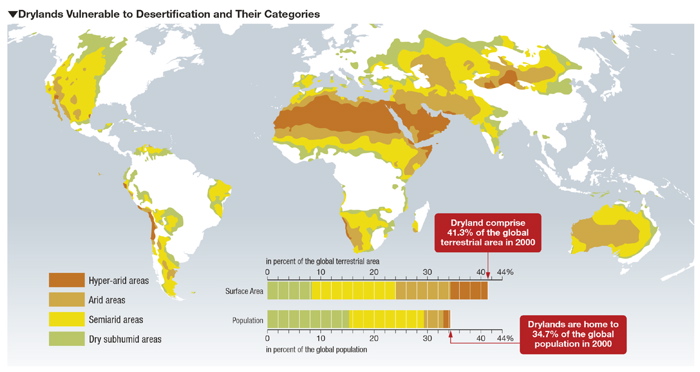The Global Desertification - The Situation, and the Challenges for Japan -
prev(1/8)|The Global Desertification|next(3/8)
1. What is Desertification ?
Classification of Drylands
The United Nations Convention to Combat Desertification(UNCCD) defines desertification as land degradation in arid, semi-arid and dry sub-humid areas resulting from various factors, including climatic variations and human activities.
Dryland which are vulnerable to desertification occupy 41% of Earth's land area and are home to more than 2 billion people, at least 90% of whom lives in developing countries. Desertification often causes poverty, food insecurity and water scarcity.

Dryland subtypes are determined by the aridity index(AI=P(annual precipitation)/ PET(potential evapotranspiration)). In Drylands, water deficit constrains the production of crops, forage and other plants.
Drylands Vulnerable to Desertification and Their Categories

Source:Millennium Ecosystem Assessment
Some 10-20% of drylands are already degraded. Based on rough estimates, about 1-6% of the dryland people (approx. 20 million-120 million people) live in desertified areas.
COLUMN: Millennium Ecosystem Assessment
The Millennium Ecosystem Assessment(MA) was called for in 2000 by UN Secretary-General, Kofi Annan, and since, has been implemented and compiled. Through four UN Convention Secretariats―the Convention on Biological Diversity, the Convention to Combat Desertification, the Ramsar Convention on Wetlands and the Convention on Migratory Species, a number of institutions provided the MA with information. A ‘Desertification Synthesis'was prepared from 2003 to 2005.